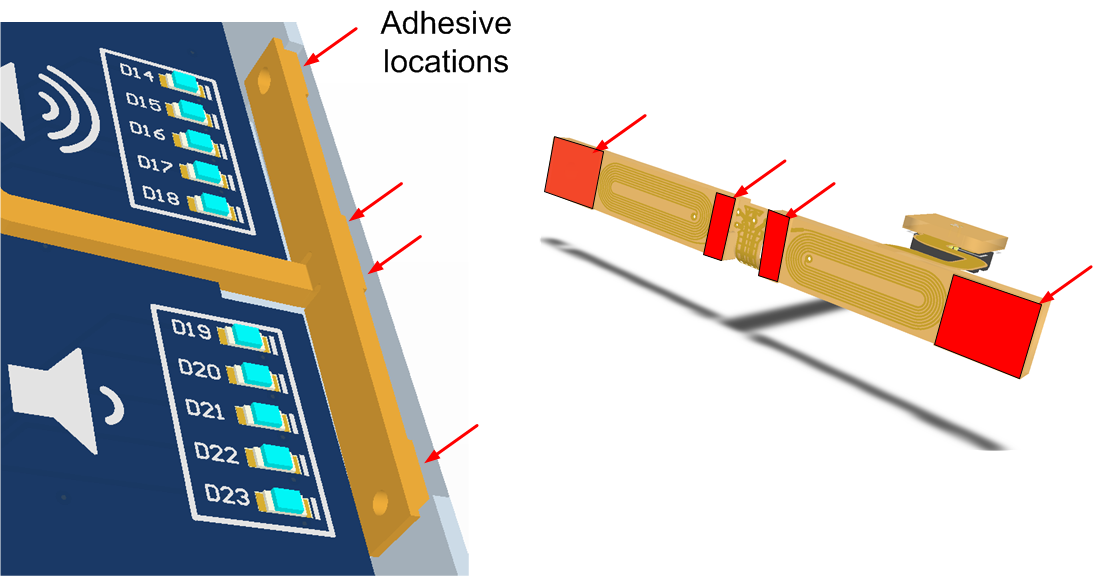SNOA961A February 2017 – February 2023 LDC2112 , LDC2114 , LDC3114 , LDC3114-Q1
- Inductive Touch System Design Guide for HMI Button Applications
- 1Mechanical Design
- 2Sensor Design
- 3Summary
- 4Revision History
1.7.1 Adhesive-Based
The most straight-forward method for mounting the sensors is to apply adhesive to the spacers and glue them to the metal target. The adhesive-based system does not require additional mechanical pieces and is suitable for quick prototyping. The downside is that the glue attachment process is less repeatable.
#T4726003-26 shows an image of the two side buttons on a phone case prototype. The size of each button coil is 8 mm × 2.7 mm. The inside of the case is recessed to make room for the coils. This not only reduces the board area used by the coils, but also reduces the rigidity of the metal sidewall and enhances sensitivity.
 Figure 1-10 Adhesive-Based Sensor Structure
Figure 1-10 Adhesive-Based Sensor Structure